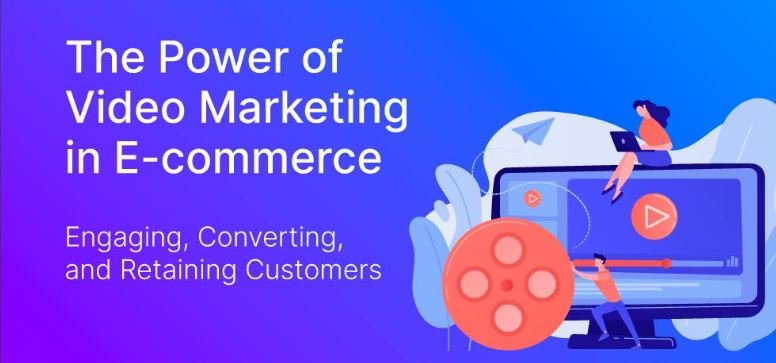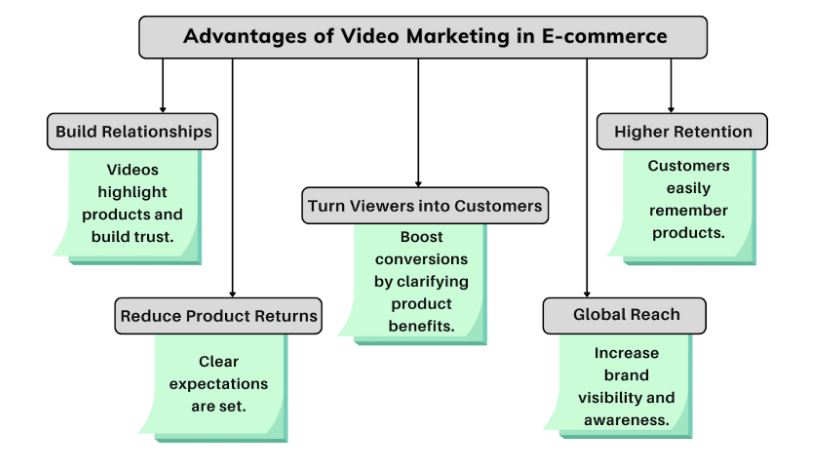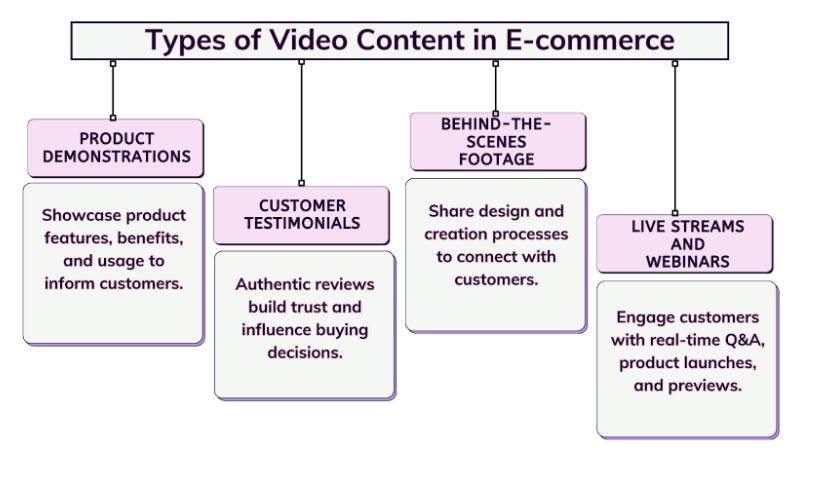Harnessing AI to Unlock Customer Preferences in eCommerce


What do you do after selecting a product on Amazon or Alibaba? You would search for the related video content on that page through which you can know how this product works.
It is true that consumers are always attracted to a product when they see it from their eyes in a video content format, and this motivates them to purchase it.
Nowadays, every e-commerce company is working towards building powerful video content for the products on their website with the aim of connecting with their audience.
Let’s read about the relevance of video content in the e-commerce ecosystem.
Undoubtedly, video content is surprisingly showing high numbers in the e-commerce industry.
The main motive of this data is that people are interested in viewing product videos as they want to know more about it. Additionally, when they see the product on screen, they can know the dimensional measurements of it.
The prime example is Amazon 3D Modelling on the Amazon application, where a user can open their mobile camera to see if that product fits in the room or not.

Once the videos are implemented in the e-commerce domain, the companies can reap multiple benefits.
Videos have a unique ability to capture attention quickly, which makes them an effective medium for engaging potential customers.
If compared with text or static images, videos can convey:
This robust engagement brings a deeper connection between the brand and the consumer, leading to increased trust and loyalty.
E-commerce platforms have noticed that when they incorporate video content into their product pages and marketing campaigns, it boosts conversion rates.
There are higher chances of converting shoppers who watch product videos into customers when they watch video content, as they provide a clearer understanding of the product’s features and benefits.
Companies can expect up to 85% conversion rates on their e-commerce website when they use product videos.
These videos should address potential customers’:
People prefer to watch video content rather than read text on websites. Additionally, video content is highly shareable, so it has become an excellent tool for increasing brand visibility.
When viewers share video content on different social media platforms, it automatically helps the company reach new audiences, including national and international audiences.
In fact, 90% of marketers report that video marketing has increased brand awareness among their audience.
Furthermore, those people who find your products who are unaware of them might be through traditional advertising methods.
Detailed product videos help set accurate expectations by showcasing products comprehensively.
Furthermore, this visual representation helps convey complex information in an easy format.
For example, when a user watches a tutorial video showcasing how to assemble or use a product, it can:
When customers know how the products look in videos, then they are 57% more confident in buying them; hence, there are fewer product returns.
Search engines prioritize websites that have engaging content and video content in indexing. As a matter of fact, e-commerce websites that have relevant video content on their pages will rank higher in search engine results pages (SERPs).
The human brain has the tendency to process visual information more quickly than text.
That is why brands are moving towards developing professional videos in a format that is easy to understand and remember for their products.
Also, customers can easily recall your product or brand when making purchasing decisions.
Videos serve as an essential base to build trust in the online purchase ecosystem. As industry expert Andy Crestodina, Co-Founder of Orbit Media Studios, aptly states, “When you say it, it’s marketing. When your customer says it, it’s social proof.”
Customers develop a notion that products are reliable when they view the following:
For example, a video can be played featuring satisfied customers sharing their positive experiences. This activity will convey more information about the product’s quality and the company’s commitment to customer satisfaction.

Online platforms can leverage various types of videos to cater to different stages of the customer journey:
The main motive of the product demonstrations is to highlight the following:
When customers view all these attributes, they are more likely to make a sale as Philip Moyer, CEO of Vimeo, states, “If you watch a video, you’re 67 percent more likely to buy a product.”
For instance, a kitchen appliance brand might produce a video showing diverse recipes achievable with its product with a focus on its versatility and ease of use.
Online platforms can show authentic reviews from satisfied customers to lay the foundation of trust and credibility. Under this category, the videographer team can feature real-life experiences that can influence potential buyers’ decisions.
For instance, a beauty brand might share videos of customers discussing how a skincare product improved their skin quality. This activity will add authenticity to their marketing efforts.
This type of content generally is not revealed to the external world as it is shot during the actual shooting and might contain sensitive information, which gets cut in the final version.
Nowadays, companies are using their BTS footage with appropriate cuts (censoring confidential information) with their customers to develop a deeper connection with the audience.
For example, a fashion retailer could share videos of their design process, which includes sketching and the final product, so that customers can appreciate the craftsmanship and creativity involved.
Online platforms can use live streams and webinars to provide real-time interactions to their customers. These portals can be used to have:
For instance, technology companies like Google host a live webinar introducing a new gadget with a key focus on its features and answering viewer questions in real-time. This generates excitement and anticipation.
Industry experts emphasize the growing importance of video content in e-commerce:
Let’s discuss the famous case studies that led to remarkable successes for numerous brands.
Dollar Shave Club brought a new revolution in the razor industry with a humorous and straightforward video introducing their subscription service. The company used the video to communicate the brand’s value proposition, which led to a significant increase in subscribers. This approach fulfills two objectives:
The first video cost was just $4,500; however, it garnered over 12,000 sign-ups within 48 hours. As of November 2015, the video exceeded 21 million views. This campaign is hailed as one of the best viral marketing efforts, and it won the “Best Out-of-Nowhere Video Campaign” at the 2012 AdAge Viral Video Awards.
Indestructible Shoes leveraged YouTube advertising to showcase the durability and strength of their footwear. The company developed engaging video content that highlighted product features in real-life scenarios. Due to this, they achieved $1.16 million in sales with a return on ad spend (ROAS) of 2.24x.
TikTok Shop experienced remarkable growth by doubling its active business sellers to over 200,000, including brands like Sweaty Betty and L’Oreal.
In 2024, the platform hosted 5,000 daily live broadcasts, twice as many as in 2023. Notably, the beauty brand Made by Mitchell achieved sales exceeding $1 million in a single day with the power of live video.
Spotify’s annual “Wrapped” campaign offers users personalized video summaries of their listening habits. This initiative encourages widespread sharing on social media, which enhances user engagement and brand visibility on the internet.
The 2019 campaign generated over 1.2 million Twitter posts, which shows the power of personalized video content in developing customer loyalty and organic promotion.
A process has to be followed if e-commerce platforms want to implement videos in their processes.
The companies need to tailor their video content to resonate with their target demographic.
They can consider the below factors to create videos that address their specific needs and interests:
People don’t have time to watch long-format videos as attention spans are limited. Therefore, the e-commerce platforms should aim for brevity in their videos.
A better strategy would be to have videos under two minutes because this timeframe will respect viewers’ time, and there are higher chances that they will pay attention to videos.
Use videos to showcase the products in action. There will be higher conversion rates when companies properly demonstrate products:
Guide viewers on the desired next steps by including prominent and compelling CTAs in videos.
Thoroughly search which topic requires a video, which can be:
Every video should contain clear CTAs to take them to the page where they can buy that product.
Make those videos that can fit mobile and laptop devices at once. Videographers can use responsive design so that there are fast loading times and consider vertical video formats to enhance the viewing experience on various devices.
People will leave the video at the start when they find it’s not up to the mark. Therefore, invest in clear visuals, good lighting, and professional audio to produce high-quality video content.
When a customer views a high-production value video, it positively affects the customer and improves viewer engagement.
Furthermore, there is a requirement for clear footage and sound quality in those videos that include demonstrations or spoken content.
Encourage customers to create and share their own videos featuring the products. Ask them to share their reviews through social media so that their followers can also watch them.
Meanwhile, they can tag the products in their social media feed and stories/statuses.
Undoubtedly, UGC adds authenticity to the brand and serves as social proof, which encourages others to purchase the product.
Regularly monitor performance metrics to assess the effectiveness of the video content.
These include:
Use this data to:
Incorporating video content into your e-commerce strategy is a powerful way to engage customers, and drive sales.
At RBM Software, we can create tailored video marketing strategies for you that effectively showcase your products to the world.
Our main motive is to enhance customer engagement and boost conversion rates for our customers. Our team of experts can help you optimize video placement and ensure content resonates with your target audience.
Book your free consultation now to understand the difference.